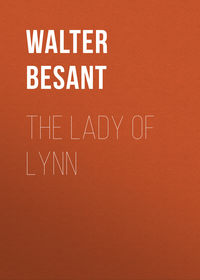 полная версия
полная версияLondon
The city (Fitz Stephen adds), like Rome, is divided into wards, has annual sheriffs for its consuls, has senatorial and lower magistrates, sewers and aqueducts in its streets – its proper places and separate courts for cases of each kind, deliberative, demonstrative, judicial – and has assemblies on appointed days. I do not think there is a city with more commendable customs of church attendance, honor to God's ordinances, keeping sacred festivals, almsgiving, hospitality, confirming betrothals, contracting marriages, celebration of nuptials, preparing feasts, cheering the guests, and also in care for funerals and the interment of the dead. The only pests of London are the immoderate drinking of fools, and the frequency of fires. To this may be added that nearly all the Bishops, Abbots, and Magnates of England are, as it were, citizens and freemen of London, having their own splendid houses to which they resort, where they spend largely when summoned to great Councils by the King or by their Metropolitan, or drawn thither by their own private affairs.
A noble picture of a noble city!
Let us consider the monuments of the City. There remains of Saxon London nothing. Of Norman London, the great White Tower, the crypt of Bow, the crypt of St. John's Priory (outside the City), part of the church of Bartholomew the Great, part of St. Ethelburga's, Bishopsgate; there is nothing more.2
The cathedral of St. Paul's when Fitz Stephen wrote was slowly rising from its ashes. It had been already twice destroyed by fire. First, the church founded by Mellitus and beautified by Bishop Cedd and King Sebbi was burned to the ground in the year 961. We know nothing at all of this building or of its successor, which was destroyed in the year 1086. Bishop Maurice began to rebuild the church in the following year, but it was two hundred years before it was completed. This cathedral therefore belongs to a later period. That which was destroyed in 1084 must have resembled in its round arches and thick pillars the cathedral of Durham.
The church and the various buildings which belonged to it in the reign of Henry I. were surrounded by a wall. This wall included the whole area now known as St. Paul's Church-yard, and as far as Paternoster Row on the north side. There were six gates to the wall; the sites of two are preserved in the names of St. Paul's Alley and Paul's Chain. The Bishop's Palace was on the north-west corner; the chapter-house was on the south side of the church; on the north was a charnel-house and a chapel over it; close beside this was a small enclosure called Pardon Church-yard, where a chapel was founded by Gilbert à Becket, the saint's father. This enclosure was afterwards converted into a beautiful cloister, painted with a Dance of Death, called the Dance of St. Paul's. Close beside Pardon Church-yard was the chapel of Jesus, serving for the parish church of St. Faith until the chapel was destroyed, when the parish obtained the crypt for its church. St. Faith's is now coupled with St. Augustine's.
Of the thirteen large conventual churches mentioned by Fitz Stephen, we may draw up a tolerably complete list: St. Martin-le-Grand, St. Katherine's by the Tower, St. Mary Overies, Holy Trinity Priory, St. Bartholomew's Priory, St. Giles's Hospital, St. Mary of Bethlehem, the priory of St. John of Jerusalem, the nunnery afterwards turned into Elsing's Spital, the nunnery of St. John Baptist, Hollywell, the nunnery of Clerkenwell, the new Temple in Fleet Street, and the old Temple in Holborn, perhaps make up the thirteen. I cannot believe that Fitz Stephen could have included either Barking Abbey or Merton Abbey in his list.
The most ancient monastic foundation, next to that of St. Paul's, was St. Martin's House or College. Why St. Martin was so popular in this country, which had so many saints of her own, is not easily intelligible. Perhaps the story of the partition of the cloak at the gate of Amiens, while the saint was still a soldier, struck the imagination of the people. Certainly the saint's austerities at Ligujé would not attract the world. In London alone there were the church of St. Martin's, Ludgate Hill, said to have been founded in very early Saxon times, that of St. Martin's Outwich, of St. Martin Orgar, St. Martin Pomary, and St. Martin Vintry – five parish churches to attest his sanctity and his popularity.
St. Martin-le-Grand, sanctuary and collegiate church, was a Liberty to itself. Here criminals found safety and could not be arrested, a privilege which lasted long after the dissolution of the religious houses. Among the deans of St. Martin's was William of Wykeham.
One church only of the whole thirteen still stands. Part of the present church of St. Bartholomew the Great is that actually built by Rahere, the first founder, in the beginning of the twelfth century.
The story of Rahere is interesting but incomplete, and involved in many difficulties. He is variously said to have been the king's minstrel, the king's jester, a knight of good family, and a man of low origin, who haunted great men's tables and made them laugh – nothing less than the comic person of the period, entirely given over to the pleasures of the world. In short, the customary profligate, who presently saw the error of his ways, and was converted. The last statement is quite possible, because, as is well known, there was at this time a considerable revival of religion. The story goes on to say that, being penitent, Rahere went on a pilgrimage. Nothing more likely. At this time, going on pilgrimage offered attractions irresistible to many men. It was a most agreeable way of proving one's repentance, showing a contrite heart, and procuring absolution. It also enabled the penitent to see the world, and to get a beneficial change of air, food, and friends. There were dangers on the way: they lent excitement to the journey; robbers waylaid those of the pilgrims who had any money; fevers struck them low; if they marched through the lands of the infidel, they were often attacked and stripped, if not slain; the plains of Asia Minor were white with the bones of those cut off on their way to the Holy Land. But think of the joy, to one of an inquiring and curious mind who had never before been beyond sight of the gray old London walls, to be travelling in a country where everything was new – the speech, the food, the wine, the customs, the dress – with a goodly company, the length of the road beguiled by pleasant talk! Everybody pilgrimized who could, even the poorest and the lowest. The poorest could go as well as the richest, because the pilgrim wanted no money – he would start upon his tramp with an empty scrip. Such an one had naught to lose, and feared no robbers; he received bed and supper every night at some monastery, and was despatched in the morning after a solid breakfast. When he at length arrived at the shrine for which he was bound, he repeated the prayers ordered, performed the necessary crawlings, and heard the necessary masses; he then returned home, his soul purified, his sins forgiven, his salvation assured, and his memory charged with good stories for the rest of his life. The English pilgrim fared sometimes to Walsingham, sometimes to Canterbury, sometimes farther afield. He journeyed on foot through France and Italy to Rome; he even tramped all across Europe and Asia Minor, if he could be received in some great company guarded by the knights of St. John to the Holy Land. The roads in the eleventh and twelfth centuries were covered with pilgrims; the Mediterranean was black with ships going from Marseilles, from Genoa, from Naples, to the port of St. Jean d'Acre. Even the rustic, discovering that he, too, simple and unlettered as he was, had a soul to be saved, and that it would be better not to trust altogether to the last offices of the parish priest, threw down his spade, deserted his wife and his children, and went off on pilgrimage. At last the bishops interfered, and enjoined that no one should be considered and received as a pilgrim who could not produce an episcopal license. It was no longer enough for a man to get repentance in order to get the run of the road and of his teeth; and, since the episcopal license was not granted to everybody, the rustics had to fall back on what the parish church afforded, and have ever since been contented with her advice and authority.
There was an Office of Pilgrims, which was to be rendered in the following fashion:
Two of the second stall, who may be put in the table at the pleasure of the writer, shall be clothed in a Tunic, with copes above, carrying staves across, and scrips in the manner of Pilgrims; and they shall have cappelli3 over their heads, and be bearded. Let them go from the Vestiary, singing a hymn, "Jesus, our redemption," advancing with a slow step, through the right aisle of the Church, as far as the Western gates, and there stopping, sing a hymn as far as that place, "You shall be satisfied with my likeness." Then a certain Priest of the higher stall, written in the table, clothed in an Alb and Amess, barefooted, carrying a cross upon his right shoulder, with a look cast downward, coming to them through the right aisle of the Church, shall suddenly stand between them, and say, "What are these discourses?" The Pilgrims, as it were, admiring and looking upon him, shall say, "Are you a stranger?" etc. The Priest shall answer, "In what city?" The Pilgrims shall answer, "Of Jesus of Nazareth." The Priest, looking upon both of them, shall say, "O fools, and slow of heart," which being said, the Priest immediately shall retire, and pretend to be going farther; but the Pilgrims hurrying up, and following him, shall detain him, as it were, inviting him to their inn, and drawing him with their staves, shall show him a castle and say, "Stay with us." And so singing they shall lead him as far as a tent in the middle of the nave of the Church, made in the resemblance of the Castle Emmaus. When they have ascended thither, and sat at a table ready prepared, the Lord sitting between them shall break the bread; and being discovered by this means, shall suddenly retire, and vanish from their sight. But they, amazed as it were, rising, with their countenances turned to each other, shall sing lamentably "Alleluia," with the verse, "Did not our heart burn," etc., which being renewed, turning themselves towards the stall, they shall sing this verse, "Tell us, Mary." Then a certain person of the higher stall, clothed in a Dalmatick and Amess, and bound round in the manner of a woman, shall answer, "The Sepulchre of Christ; the Angels are witnesses." Then he shall extend and unfold a cloth from one part, instead of clothes, and throw it before the great gate of the Choir. Afterwards he shall say, "Christ is risen." The Choir shall sing two other verses, following, and then the Master shall go within; a procession be made; and Vespers be ended.4
There was also a Consecration of Pilgrims, as follows:
The Pilgrims first confessed all their sins, after which they lay prostrate before the Altar. Particular prayers and psalms were then said over them, and after every psalm (with manifest skilful appropriation) the Gloria Patri; the Psalm, Ad te, Domine, levavi; and the Miserere. At the end of these, the Pilgrims arose from their prostrate position, and the Priest consecrated their scrips and staves, saying, "The Lord be with you," and "let us pray," etc. He next sprinkled holy water upon their scrips and staves, and placed the scrip around the neck of each pilgrim, with other religious services. Afterwards he delivered to them the staff with similar prayers. If any of the Pilgrims were going to Jerusalem, their garments were in readiness, marked with the cross, and the crosses were consecrated, and holy water sprinkled over them. The garments and crosses were then delivered to the Pilgrims, accompanied by appropriate prayers. The service concluded with the Mass De Iter Agentibus.5
Rahere, therefore, among the rest, pilgrimized to Rome. Now it happened that on the way, either going or returning, he fell grievously sick and was like to die. As medical science in those days commanded but small confidence, men naturally turned to the saints, and besieged them with petitions for renewed health. Rahere betook himself to St. Bartholomew, to whom he promised a hospital for poor men should he recover. Most fortunately for London, St. Bartholomew graciously accepted the proposal, and cured the pilgrim. Rahere therefore returned: he chose the site, and was about to build the hospital, when the saint appeared to him and ordered him to found, as well, a church. Rahere promised. He even went beyond his promise: he founded his hospital of St. Bartholomew, which still exists, a perennial fountain of life and health, and, besides this, a priory for canons regular, and a church for the priory. The church still stands, one of the most noble monuments in London. One Alfune, who had founded the church of St. Giles Cripplegate, became the first Hospitaller, going every day to the shambles to beg for meat for the sick poor. Rahere became the first prior of his own foundation, and now lies buried in his church within a splendid tomb called after his name, but of fifteenth-century work.
The mysterious part of the story is how Rahere, a simple gentleman, if not a jester, was able to raise this splendid structure and to found so noble a hospital. For, even supposing the hospital and priory to have been at first small and insignificant, the church itself remains, a monument of lavish and pious beneficence. The story, in order to account for the building of so great a church, goes off into a drivelling account of how Rahere feigned to be a simple idiot.
A great many people every year visit this noble church, now partly restored. Very few of them take the trouble to step round to the back of the church. Yet there are one or two things worth noting in that nest of low courts and squalid streets. Cloth Fair, for instance, still possesses a few of its old timbered and gabled houses. But on the other side a small portion of the old monastery church-yard yet remains, and, in a row of two or three cottages, each with a tiny garden in front: a cottage-garden close to Smithfield – survives a memory of the garden which once stretched over this monastery court.
Some of the other foundations enumerated were only recently founded when Fitz Stephen wrote, and rightly belong to Plantagenet London. But the noble foundation of the Holy Trinity, Aldgate, was due to Matilda, queen of Henry I., who also founded St. Giles's Hospital, beside St. Giles-in-the-Fields. And the priory of St. John of Jerusalem, the chief seat in England of the Knights Hospitallers, was founded in the year 1100, by Jordan Briset, and Muriel, his wife.
St. Katherine's by the Tower was first founded by Matilda, wife of King Stephen. This, the most interesting of all the city foundations, has survived, in degraded form, to the present day. Its appearance when it was pulled down, sixty years ago, and as it is figured, was very much unlike the original foundation by Queen Matilda. Yet the life of this old place had been continuous. For seven hundred years it remained on the spot where it was first established. Matilda first founded St. Katherine's, as a hospitale pauperum, for the repose of the souls of her two children who died and were buried in the Holy Trinity Priory. It was to consist of thirteen members – "Brothers and Sisters." It was endowed with certain estates which the society, after this long lapse of time, still enjoys; the sisters had the right of voting at chapter meetings – a right which they still retain. The hospital was placed in the charge or custody of the prior of Holy Trinity. A hundred years later there was a dispute as to the meaning of the right of custody, which the priory maintained to be ownership. In the end Queen Eleanor obtained possession of the place, and greatly increased its wealth and dignity. Under her it consisted of a master, three brothers in orders, three sisters, and ten bedeswomen. They all lived in their college round the church of St. Katherine. Queen Philippa, another benefactor, further endowed the hospital, adding two chaplains and six poor scholars. Philippa's new charter, with the building of a splendid church, raised the hospital to a position far above the small foundation of poor men and women designed by Matilda. It now stood within its precinct of eleven acres, possessed of its own courts, spiritual and temporal, its own law officers, and even its own prison. Its good-fortune in being considered the private property of the Queen Consort caused it to escape the general suppression of the religious houses. It lived on – albeit a sleepy life – a centre of religion and education to the poor people among whom it was placed. It should have lived there till this day; it should have become the Westminster Abbey of East London; but greed of gain destroyed it. Its venerable buildings – its chapel, college, cloisters, and courts were all destroyed sixty years ago in order to construct on their site the docks called St. Katherine's, which were not wanted for the trade of the City. In order to construct docks, in rivalry with other docks already established, this most precious monument of the past – the Abbey Church of East London – was ruthlessly destroyed. Who would believe such a thing? The dust and ashes of the nameless dead which filled its burying-yard were carried away and used to fill up certain old reservoirs, on the site of which were built streets and squares; and in Regent's Park they stuck up a new chapel, with half a dozen neat houses round it, and called that St. Katherine's by the Tower. Some day this foundation, with its income of £10,000 a year, must be sent back to East London, to which it belongs. Poor East London! It had one – only one – ancient and venerable foundation, and they have wantonly and uselessly destroyed it.
Everybody who visits London goes to see the Temple Church and the courts formerly trodden by the Templars, now echoing the hurried feet of lawyers and their clerks. Their beautiful church, however, is that of the new Temple. There was an older Temple than this. It stood at the north-east corner of Chancery Lane. It was certainly some kind of quadrangular college with its chapel, its hall, its courts, and its gardens. When the Templars moved to their new quarters, it passed into other hands and ceased to be a monastic place. Some of its buildings survived until the sixteenth century.
Is the legend of St. Mary Overies too well-known a story to be retold? Perhaps there are some readers who have not read the Chronicles of London Bridge, where it is narrated.
Long years ago, before there was any London Bridge at all, a ferry plied across the river between what is now Dowgate Dock and that now called St. Saviour's Dock – both of which exist untouched, save that the buildings round them are changed. At one time the ferry-master – he appears to have sat at home and taken the money while his servants tugged at the oar – was one Awdrey. There was no competition in the ferry trade of the time, so that this worthy employer of labor grew rich. As he became old, however, he fell into the vice common to rich men who are also old – that is to say, he became avaricious, covetous, and miserly; he suffered acutely from this failing, in so much that he grudged his servants their very food. This miser had a daughter, a lovely damsel named Mary, of whom many young knights became amorous. To one of these she lost her heart; and, as too commonly happens, to the poorest, a thing which her father could not countenance. The knight, therefore, not being able to get the consent of Awdrey père, removed to another place, guarding still the memory of his Mary, and still beloved by her. As there was no post in those days, and neither could write, they exchanged no letters, but they preserved their constancy and fidelity.
Now behold what may happen as a punishment for avarice! The old man one day, devising a way to save a few meals – for at a time when death is in the house who can think upon eating and drinking? – pretended that he was dead, and laid himself out with a white sheet over him. Alas! He was cruelly mistaken. His servants, learning what had happened, loudly and openly rejoiced, stripped the larder of all that it contained, set the casks flowing, opened the bottles, and began to feast and sing. It was more than the old man could endure. He sprang from his bed and rushed among them; they fled, shrieking, because they thought it was his ghost; one, bolder than the rest, stood his ground to face the ghost, and banged the apparition over the head with the butt-end of a broken oar, so that the unlucky ghost fell down dead in real earnest. What happened when they came to bury him may be read in the book above referred to.
The miser's fortune thereupon devolved upon his daughter. She immediately sent for her lover, who hastened to obey his mistress. Alas! on his way the unlucky knight was thrown from his horse and was killed. The girl, distracted by this misfortune, founded a convent of sisters at the south end of the ferry, and taking refuge in her own Foundation, retired from the world. Here in course of time she died. Later on, another pious lady changed the convent of sisters to a college of priests, and very early in the twelfth century two Norman knights, named Pont de l'Arche and D'Ansey, founded here a great priory, of which the present Church of St. Saviour was then the chapel. The Effigy of Pont de l'Arche (or perhaps it is that of his friend D'Ansey) is still to be seen, with no inscription upon it, in the church. The chancel, the two transepts, and the Ladye Chapel now remain of the old church with its later additions, and at this moment they are rebuilding the nave in something like the former style.
"There were in London," Fitz Stephen says, "a hundred and twenty-six parish churches besides the cathedral and conventual churches." Whatever the population may have been, the City has never, in her most crowded days, when nearly half a million lived within her walls, wanted more churches. A list of them may be found in Strype and Stow. Some of them – twenty-five, I think – were never rebuilt after the great fire. Many of them, in these days, have been wantonly and wickedly destroyed. Most of the churches were doubtless small and mean buildings. Fortunately, we are able to show, by the survival of one monument, what some of these little parish churches of London were like in the Saxon and early Norman times. There remains at Bradford-on-Avon, a little town of Wiltshire, a church still complete save for its south porch, built by St. Aldhelm in the eighth century. There are other partly Saxon and so-called Saxon remains. There is the most curious church of Greenstead in Essex, whose walls are trunks of oak-trees. Perhaps some of the London churches may have been built in the same way, but it is more probable that the piety of the parishioners made them of stone.6 The accompanying figure shows the Bradford church. It is very small; the plan shows the arrangement of nave, chancel, and north porch; it had a south porch, but that is gone. The walls are of thick stone; the nave is 25 feet 2 inches long, and 13 feet 2 inches broad; the chancel is 13 feet 2 inches long, and 10 feet broad. The height of the nave to the wall plates is 25 feet 3 inches; of the chancel is 18 feet. The chancel opens out from the nave, not with a broad arch, but with a narrow door only 2 feet 4 inches broad – a very curious arrangement. The doors of the south and north porches are of the same breadth. The church must have been very dark, but, then, windows in a cold climate, if you have no glass, must be as small in size and as few in number as possible. It was lit by a small window in the eastern wall of the north porch, no doubt by another in the south porch, by a small window in the south wall of the nave near the chancel, and by a fourth small window in the south wall of the chancel, so placed that the light, and sometimes the sun, should fall upon the altar during celebration of mass. The church was thus imperfectly lit by four small windows, each with its round arch. The people knelt on the stones; there were no chairs or benches for them; the bareness of the church at the present day is just what it was at first. There is no tower. Over the chancel arch are sculptured two angels. Outside the church, at the height of about ten feet, runs a course of round arcades, the only ornament, unless the remains of some engaged pilasters on the inner door of the north porch be counted as ornament. A little new masonry has been added within, and two new windows have been cut in the northern wall for the purpose of giving more light. But with these exceptions the church is exactly as it was when Aldhelm reared it and dedicated it to St. Laurence. I do not say that this little church represents all the Saxon parish churches of London, but we may be sure that it represents some, and we know that many of them, even after they had been rebuilt in the twelfth century, and after mediæval piety had beautified and decorated them, remained mean and small. In the matter of Saxon churches we have perhaps fewer existing specimens than we have of the earlier British churches. The Church of St. Mary at Dover, built of Roman bricks and cement; part of St. Martin's, Canterbury; and the little Cornish Church of Perranazabuloe belong to that earlier period. But the Church of St. Laurence, in the pretty old town of Bradford-on-Avon, is, according to Professor E. A. Freeman, the one surviving old English church in the land.









